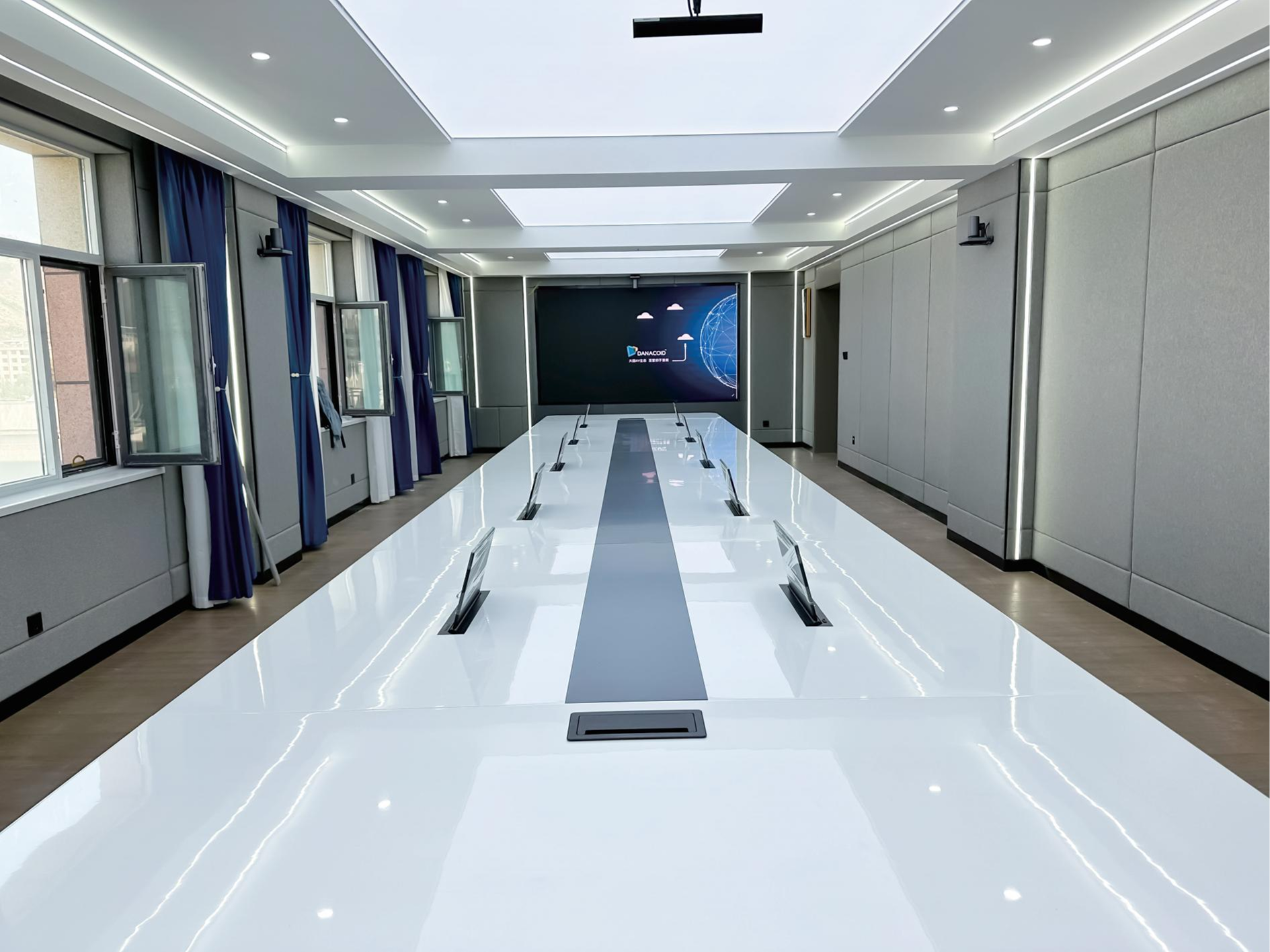السماعات المثبتة على الحائط: توفير المساحة حلول للغرف الصغيرة
الاستفادة القصوى من المساحة المحدودة
مكبرات صوت مثبتة على الحائط تقدم مزايا كبيرة في تقليل المساحة التي تحتلها معدات الصوت، خاصة في الأماكن المعيشية الصغيرة. ووفقًا لدراسات التصميم الداخلي، يمكن لهذه التركيبات أن تحرر ما يصل إلى 30% من مساحة الأرضية عن طريق القضاء على الحاجة إلى مكبرات صوت كبيرة قائمة على الأرض. وتتضمن التكوينات المناسبة للغرف التي تُركب فيها هذه المكبرات على الجدران غرف المعيشة الصغيرة وغرف النوم والمكاتب المنزلية، حيث قد تحتل نماذج المكبرات التقليدية مساحات ثمينة.
تجنب الإفراط في الصوتيات
في الغرف الصغيرة، قد يكون التحكم في الأكوستيك تحديًا، لكن يمكن وضع مكبرات صوت على الحائط بشكل استراتيجي لمنع الصوت من أن يصبح مفرطًا. تشمل المشكلات الشائعة في المساحات المحدودة التردد الزائد والصدى، مما قد يُشوّه جودة الصوت. للتخفيف من هذه المشكلات، يقترح خبراء الأكوستيك وضع مكبرات الصوت على مستوى الأذن وتنظيمها لتوزيع الصوت بالتساوي عبر الغرفة. اتباع هذه التقنيات يمكن أن يحقق تجربة صوتية متوازنة وممتعة حتى في المساحات المحدودة.
تصاميم مدمجة مع أداء قوي
سمحت التطورات الحديثة في تقنية مكبرات الصوت بتصميم تصاميم مدمجة تقدم صوتًا عالي الجودة. يمكن لمكبرات الصوت المثبتة على الحائط حاليًا توفير تجارب صوتية غامرة دون التأثير على المظهر الجمالي للغرفة. يشهد المهندسون الصوتيون بشكل متكرر لقدرات الأداء لهذه التصاميم المدمجة، مشيرين إلى مدى تناسقها مع أنماط الديكور المختلفة مع تقديمها إخراجًا صوتيًا قويًا. يجعل هذا الجمع بين التوافق الجمالي والكفاءة التقنية منها خيارًا شائعًا للمساحات الصغيرة الحديثة.
التوسيع: مكبرات الصوت المثبتة على الحائط في إعدادات الغرف الكبيرة
التكامل في أنظمة الصوت المحيط
أصبحت السماعات المثبتة على الجدران ضرورية في إنشاء أنظمة صوت محيط فعالة، وذلك بفضل قدرتها على تسهيل توزيع الصوت بشكل متقدم داخل الغرف الكبيرة. من خلال تركيب السماعات على الجدران، يمكن ترتيبها بشكل استراتيجي لخلق بيئة صوتية شاملة تُحدد تجربة السينما المنزلية الحقيقية. على سبيل المثال، يمكن بسهولة تحقيق تكوين 5.1 أو 7.1 دون ازدحام المساحات الأرضية، مما يجعل السماعات المثبتة على الجدران الاختيار الأمثل للترتيبات المتعددة الاستخدامات ومرتبة تمامًا. تشير بيانات الصناعة إلى اتجاه تصاعدي، حيث يعتمد المزيد من المنازل على أنظمة سينما منزلية مزودة بسماعات مثبتة على الجدران لتعزيز تجارب الصوت الخاصة بهم مع الحفاظ على مظهر أنيق للغرفة.
توزيع الصوت القائم على المناطق
توفر أنظمة الصوت القائمة على المناطق حلاً عمليًا لإدارة توزيع الصوت في المساحات الكبيرة، مما يضمن تجربة سمعية متميزة عبر مختلف المناطق. وتتيح هذه الأنظمة إعداد وإدارة مناطق مختلفة بشكل مستقل، مما يجعل من الممكن تخصيص البيئة الصوتية وفقًا للاحتياجات المحددة. تُظهر الدراسات الحالة أن السماعات المثبتة على الجدران تكون فعّالة بشكل خاص في خدمة المناطق الصوتية المختلفة، حيث توفر وضوحًا وثباتًا في جودة الصوت عبر الغرف الواسعة. ويقترح الخبراء أن الاعتماد على وضع السماعات وضبطها بدقة هو المفتاح لتحقيق تجربة صوتية مثالية في مختلف تخطيطات الغرف، مما يضمن استفادة كل منطقة بصوت متوازن وعالٍ الجودة.

التغلب على التحديات الصوتية
غالبًا ما تُشكل المساحات الكبيرة تحديات صوتية فريدة، مثل الصدى وتوزيع الصوت غير المتساوي، ويمكن التصدي لهذه المشكلات بشكل فعال باستخدام مكبرات الصوت المثبتة على الجدران. يمكن وضع هذه السماعات بشكل استراتيجي لتوجيه الصوت بدقة أكبر، مما يقلل من تأثير ارتداد الموجات الصوتية في المساحات الشاسعة. يوصي المهندسون الأكستيونيون بحلول مثل استخدام سماعات صوتية ذات توجيه محدد وعلاجات صوتية للحد من المشكلات الشائعة في البيئات الواسعة. تؤكد الأبحاث على أهمية وضع السماعات وضبطها بدقة؛ حيث يضمن ذلك جودة صوت مثلى من خلال التناغم مع الخصائص الصوتية الطبيعية للغرفة وتعزيز تجربة الاستماع دون إحداث ضوضاء مفرطة أو فقدان الوضوح.
تحسين موقع السماعات حسب حجم الغرفة
الارتفاع المثالي للتثبيت حسب أحجام الغرف المختلفة
تختلف الارتفاع المثالي لتركيب مكبرات الصوت على الحائط وفقًا لحجم الغرفة وخصائصها الصوتية. في المساحات الكبيرة والمفتوحة مثل غرف المعيشة، يجب تركيب مكبرات الصوت أعلى على الجدار للسماح بانتشار الصوت عبر المنطقة بأكملها. على الجانب الآخر، في الغرف الأصغر مثل غرف النوم، يضمن تثبيت مكبرات الصوت على ارتفاع أقل وصول الصوت إلى المستمعين بشكل فعال ومن دون حدوث صدى. تشير دراسة أُجريت حول الخصائص الصوتية إلى ضرورة إبقاء مكبرات الصوت بين مستوى الأذن ومضاعفة ارتفاع المستمع مرتين من أجل توزيع صوتي مثالي. بالإضافة إلى ذلك، فإن أبعاد الغرفة وترتيب الأثاث يؤثران على قرار التثبيت. على سبيل المثال، قد تتطلب الأسقف العالية أن تكون مكبرات الصوت مائلة قليلاً لتجنب حبس الصوت والتأكد من توزيعه بالتساوي.
تعديلات الزاوية والتوجيه
يمكن أن يؤدي تعديل زاوية وتوجيه مكبرات الصوت المثبتة على الحائط إلى تحسين كبير في تجربة الصوت، خاصةً في الغرف ذات الأحجام الكبيرة أو الأشكال الفريدة. أظهرت الدراسات أن إمالة مكبرات الصوت باتجاه منطقة الاستماع يمكن أن تخلق مسارًا صوتيًا مباشرًا، مما ينتج عنه تجربة صوتية أكثر وضوحًا. لتحقيق جودة صوت مثلى، يجب تجربة زوايا ومواقع مختلفة لمكبرات الصوت، مع طلب التعليقات من المستمعين بشكل مثالي. تشير الأبحاث حول الإدراك السمعي إلى أن التحديد الدقيق للصوت يزيد من الوضوح ويقلل الانعكاسات غير المرغوب فيها. لذلك، يساعد تعديل توجيه مكبرات الصوت بشكل دوري حتى الوصول إلى مستوى الرضا في تحسين جودة الصوت.
المسافة من موقع الاستماع
إن الحفاظ على المسافة الصحيحة بين مكبرات الصوت المثبتة على الجدران ومنطقة الاستماع الأساسية أمر بالغ الأهمية لتحقيق صوت متوازن. وفقًا لدراسات الهندسة الصوتية، يجب وضع مكبرات الصوت على مسافات متساوية من منطقة الاستماع الرئيسية لتجنب اختلاف الصوت. عادةً، يُوصى بوضع مكبرات الصوت على بعد لا يقل عن ثلثي طول الغرفة من نقطة الاستماع لتوفير استجابة ترددية متوازنة. على سبيل المثال، في غرفة يبلغ طولها 15 قدمًا، فإن المسافة المثالية بين مكبر الصوت ونقطة الاستماع هي 10 أقدام. إن حساب المسافة بدقة وفقًا لهندسة الغرفة ومواصفات مكبرات الصوت يساعد في إنشاء تجربة صوتية قوية وغامرة.
استراتيجيات إدارة الترددات المنخفضة
توصيل جهازي صوت منخفض معًا لتغطية الغرفة بالكامل
يمكن أن يؤدي توصيل مكبرات الصوت المثبتة على الحائط مع وحدات الترددات المنخفضة إلى خلق صوت جهير يملأ الغرفة ويُعزز التجربة الصوتية بشكل عام. تكمل وحدات الترددات المنخفضة مكبرات الصوت المثبتة على الحائط من خلال توفير ترددات منخفضة عميقة قد لا تستطيع السماعات القياسية التعامل معها بكفاءة. من خلال فهم أبعاد الغرفة، يمكنك تحديد مواقع استراتيجية لوضع وحدات الترددات المنخفضة لتحقيق أفضل استجابة للصوت الجهير. عمومًا، يساعد وضع وحدات الترددات المنخفضة في الزوايا أو بالقرب من الجدران في تعزيز الصوت الجهير. غالبًا ما يوصي الخبراء في مجال الصوتيات بتعديل إعدادات وحدة الترددات المنخفضة لتكييفها مع طبيعة الأكوستيك المختلفة للغرف، مما يضمن توازن الإخراج الصوتي ويمنع حدوث توزيع غير متساوٍ للصوت الجهير يمكن أن يقلل من التجربة الصوتية العامة.
موازنة الترددات المنخفضة في المساحات الصغيرة
يُشكل إدارة الترددات المنخفضة في المساحات الصغيرة تحديات فريدة، ولكن هناك تقنيات معينة يمكن أن تساعد في تحقيق صوت متوازن. تميل الغرف الصغيرة إلى تعزيز الترددات المنخفضة، مما يؤدي غالبًا إلى سماع صوت «دوي» مفرط. للتخفيف من ذلك، ينبغي مراعاة وضع السماعات بشكل استراتيجي لتجنب ازدحام الصوت. على سبيل المثال، يمكن أن يفيد وضع السماعات المثبتة على الجدران بعيدًا عن الزوايا واستخدام أدوات المعايرة لضبط الإخراج الصوتي بدقة. يقترح مهندسو الصوت استخدام ألواح صوتية أو فخّازات للترددات المنخفضة لامتصاص الصوت الزائد. تسهم هذه العناصر في الحفاظ على توازن الصوت، مما يضمن أن يكمل الصوت المنخفض باقي الترددات دون هيمنة عليها.
تجنب الصدى في المساحات الكبيرة
في المساحات الأكبر، يمكن أن يكون مشكلة الصوت 'الثقيل' تؤثر بشكل كبير على تجربة الاستماع، مما يؤدي إلى زيادة في الترددات المنخفضة تطغى على الترددات المتوسطة والعالية. وللتغلب على ذلك، من الضروري الانتباه إلى وضعية تركيب مكبرات الصوت على الجدران. وضع المكبرات على مستوى الأذن واختبار معالجات مختلفة للغرفة، مثل إضافة سجاد أو ستائر، يمكن أن يساعد في تقليل الصدى والمنع من انعكاس الصوت بشكل مفرط، وبالتالي تحسين وضوح الصوت. تنصح الآراء المتخصصة من خبراء الصوتيات أيضًا بضبط إعدادات المكبرات، وخاصة تردد التقاطع والتحكم في الطور، لتحسين استجابة الجهير. هذا الأسلوب لا يحسّن وضوح الصوت فحسب، بل يساعد أيضًا في الحفاظ على توازن متناغم عبر جميع الترددات، مما يضمن تجربة صوتية أكثر متعة وانغماسًا.
اعتبارات التركيب لأنواع مختلفة من الغرف
متطلبات بناء الجدران
يتطلب تثبيت مكبرات الصوت المثبتة على الحائط بشكل آمن فهم تركيب الجدران لديك، إذ ليست كل الجدران متشابهة. عادةً ما تكون الجدران الداعمة هي الأفضل بسبب دعمها القوي، مما يضمن بقاء مكبرات الصوت مثبتة بشكل آمن. أوصي بتطبيق معايير السلامة التي يحددها الخبراء في البناء، والذين يؤكدون في كثير من الأحيان على ضرورة وضع العارضة الخشبية (Stud) بشكل صحيح واستخدام أقواس تثبيت عالية الجودة. بالإضافة إلى ذلك، بالنسبة لمواد الجدران غير التقليدية مثل الجص أو الخرسانة، يمكن استخدام حلول بديلة مثل إطارات لمكبرات الصوت مثبتة على السطح أو قائمة بذاتها.
إدارة الأسلاك حلول
يلعب تنظيم الأسلاك الفعّال دوراً حاسماً في الحفاظ على المظهر الجمالي والسلامة في إعداد نظام الصوت لديك. يمكن أن تؤدي الأسلاك غير المنظمة إلى تشابكها وتشكل مظهراً غير مرغوب فيه وتُعد خطراً من حيث التعثر. تتضمن الحلول الشائعة التركيب داخل الجدران للحصول على مظهر أملس أو استخدام أنظمة القنوات التي توجه الكابلات بشكل منظم على طول الأسطح. يوصي الخبراء باختيار قنوات ذات مساحة كافية لاستيعاب الأسلاك، مما يسهل الوصول إليها ويقلل من التآكل بمرور الوقت. والتخطيط الدقيق لمسار الأسلاك واختيار مواد حماية متينة تسهم في إنشاء إعداد نظيف وفعال.
خيارات معدات التثبيت المرنة
يمكن أن يُحسّن استكشاف خيارات الأجهزة القابلة للتثبيت بشكل كبير من مرونة مكبرات الصوت المثبتة على الحائط. توفر الأجهزة القابلة للتعديل فائدة ضبط زوايا مكبرات الصوت لتتناسب مع مختلف تخطيطات الغرف ومتطلبات الصوتيات. غالباً ما يوصي محترفو تركيب المعدات الصوتية بهذه الأجهزة لكونها قابلة للدوران والتحريك، مما يوفر انتشاراً مثالياً للصوت في بيئات متنوعة. وباستيعابها لاختلاف تكوينات الغرف، تضمن هذه الحلول الخاصة بالأجهزة تحقيق أفضل تجربة صوتية ممكنة بأقل جهد.
نصائح معالجة الصوتيات
تصحيح الصوت في المساحات الصغيرة
في المساحات الصغيرة، تُعد تقنيات تصحيح الصوت ضرورية لتحسين جودة الصوت ومنع المشكلات التي تنتج عن ضيق المكان. غالبًا ما تعاني الغرف الصغيرة من انعكاسات غير مرغوب فيها وموجات صوتية ثابتة قد تؤثر بشكل كبير على وضوح الصوت. توجد طرق معتمدة وعملية لتطبيق تصحيح الصوت تشمل استخدام مكبرات صوت مثبتة على الجدران تحتوي على خصائص توازن داخلي لضبط خصائص الصوت بشكل خاص للمساحات الضيقة. على سبيل المثال، يمكن وضع مكبرات الصوت من نوع Bookshelf المعروفة بصوتها الدقيق والواضح بشكل استراتيجي لتقليل تشويه الصوت. يوصي المهندسون الصوتيون باستخدام هذه السماعات في البيئات ذات المساحات الصغيرة نظرًا لقدرتها على التكيف بشكل فعال مع البيئات المحدودة.
التحكم في التشتت الصوتي في الغرف الكبيرة
يُعدّ التحكم في الصدى داخل الغرف الكبيرة أمرًا بالغ الأهمية، إذ يمكن أن يؤثر بشكل كبير على وضوح الصوت وراحة الاستماع. أظهرت الدراسات أن الصدى المفرط يمكن أن يُخفي تفاصيل مهمة في الإشارة الصوتية، مما يؤدي إلى تجربة صوتية غير واضحة. تلعب الألواح الصوتية دورًا مهمًا في معالجة هذه المشكلات من خلال امتصاص الانعكاسات الزائدة وبالتالي تحسين وضوح الصوت. كما يساعد توزيع السماعات بذكاء في تقليل الصدى وتعزيز تجربة المستمع. تؤكد الدراسات المتعلقة بتجهيزات الصوتيات الداخلية أن تطبيق هذه الأساليب يؤدي إلى تحقيق تحكم ناجح في الصدى، خاصةً في المساحات الكبيرة والمفتوحة مثل قاعات المؤتمرات.
استراتيجيات توزيع الأثاث
إن وضع الأثاث يؤثر بشكل كبير على توزيع الصوت في الغرف الصغيرة والكبيرة على حد سواء. ولتحسين تجربة الصوت، يجب أخذ ترتيب الأرائك والطاولات والعناصر الكبيرة الأخرى بعين الاعتبار، حيث يمكن أن تعيق هذه العناصر انتقال الصوت أو تعكسه. وفي الغرف الصغيرة، يساعد الحفاظ على المساحة مفتوحة قدر الإمكان في منع إضعاف الصوت. وعلى الجانب الآخر، يمكن وضع خزائن الكتب أو الأثاث المُبطَّن في أماكن استراتيجية داخل الغرف الكبيرة لمساعدة في توزيع الصوت بشكل متساوٍ في جميع أنحاء المساحة. ويؤكد خبراء علم الصوت على ضرورة فهم ديناميكيات الغرفة وتفاعلها مع الأثاث لتحقيق بيئة صوتية متوازنة. وتضمن هذه الاستراتيجيات تجربة صوتية غامرة بغض النظر عن حجم الغرفة أو تخطيط الأثاث.
الأسئلة الشائعة
س: ما هي الفوائد الرئيسية لمكبرات الصوت المثبتة على الجدران؟
ج: تُوفِّر مكبرات الصوت المثبتة على الجدران مساحة الأرضية، وتتماشى جماليًا مع الديكور، ويمكن وضعها في مواضع استراتيجية لتحقيق أفضل جودة صوتية.
س: كيف تُدار الديناميكيات الصوتية باستخدام مكبرات الصوت المثبتة على الجدران في الغرف الصغيرة؟
ج: يمكن أن تمنع مكبرات الصوت المثبتة على الجدران بشكل استراتيجي التأثيرات الصوتية المفرطة من خلال تقليل التردد والصدى، مما يضمن توزيعًا متوازنًا للصوت.
س: هل يمكن دمج مكبرات الصوت المثبتة على الجدران في أنظمة الصوت المحيط؟
ج: نعم، تعتبر مكبرات الصوت المثبتة على الجدران مثالية لأنظمة الصوت المحيط، حيث تسمح بالوضع الاستراتيجي دون احتلال مساحة أرضية.
س: ما هي العوامل التي يجب مراعاتها فيما يتعلق ببناء الجدران عند تركيب مكبرات الصوت؟
ج: من الضروري فهم مواد الجدران وتطبيق معايير السلامة المناسبة لتحديد موقع الدعامات وتثبيت الأقواس من أجل تركيب آمن.








